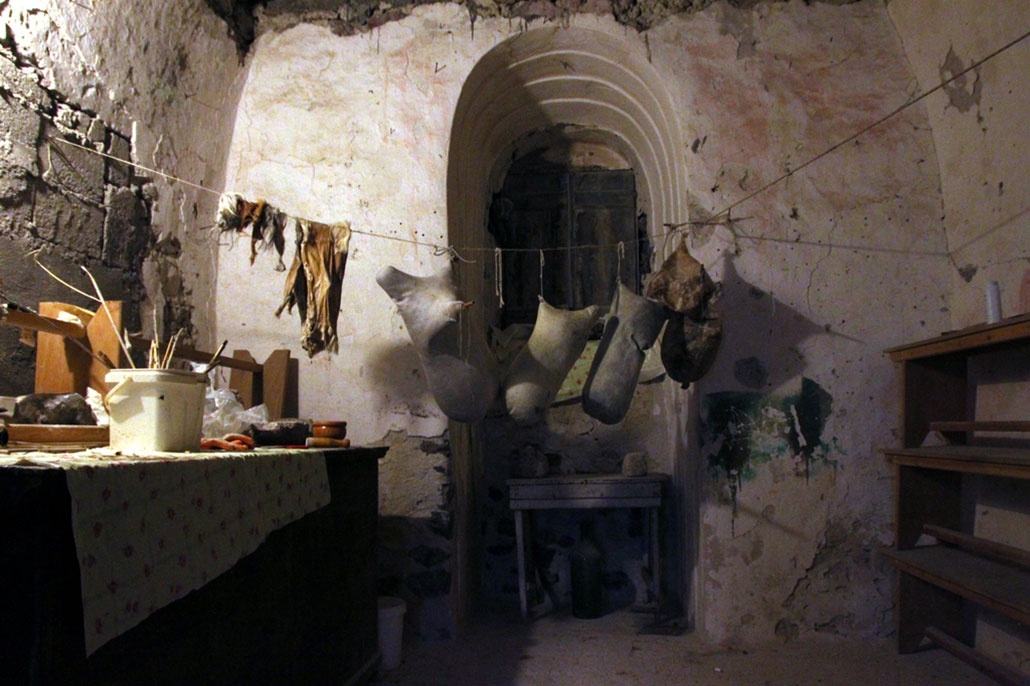
Tsampounofylaka is the Ikarian name of the ancient Greek bagpipe (also known as thylaki, fylaki or tsampouna). An apparatus storing air, memory, along with delivering musical notes, dance, celebration, and nostalgia. A musical instrument that connects the bacchanalian origin of our civilization with our pastoral lives. After all, the wine and the goat are the two feet on which the whole Ikarian civilization stands on.
The icons found in old monasteries picturing bagpipe players along with Saints taking part in Holy Communion give the viewer goosebumps.
The Tsampounofylaka is the par excellence musical instrument of Ikaria, followed by the lyrotsampouno (lyre with bagpipe). It is, perhaps, the only true mouthpiece of our traditional music, which, due to its limited repertoire, has remained largely unchanged through the years.
The Tsampounofylaka is an instrument of memory and a trade mark to our folkways, customs, and the values of older societies; in this case of the Ikarian life. It balloons constantly in Ikaria and its playing looks a bit like the white waves one can see from the mountain when the weather is bad. The last bagpipe player died on 2007. He did not perform at festivals but instead, he played the carols during Christmas and, of course, played for his friends, his family and grandchildren in Perdiki. The previous to last bagpipe player lived in Raches.
In general, during the last fifty years bagpipe players performed in Perdiki, Ploumari, Aghios Kyrikos, Faros, Raches, Amalou, and in Karkinagri. Their names and memories have been collected religiously.
Today you can find young bagpipe players all over the island. In Papas, in Fanari, Messaria, Perameria, and in Raches. You might have seen or heard them somewhere. A lot of effort is being made to revive the tradition of this instrument, but to also keep alive the old ikarian tunes that have almost been extinct.
Years pass, and traditions change, it goes without saying. But traditions should be reproduced creatively and molded into something new. Per our opinion, though, they should not be shrunk, degraded, and fitted into arbitrary boxes. The guiding principle exists, much like the guides of the bricklayer. Whether the next brick gets placed into the right place or not, falls upon us.
Ikariotes for ikariamag.gr








